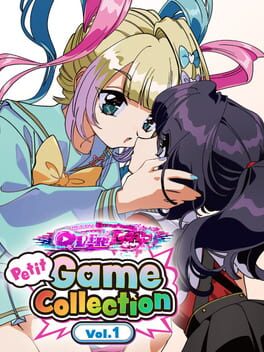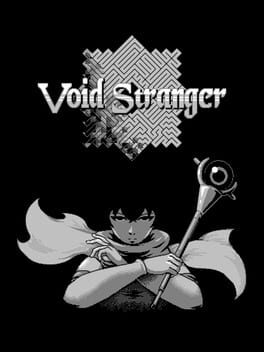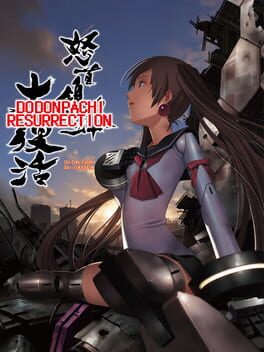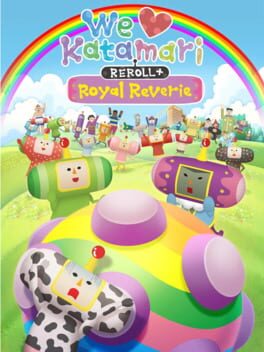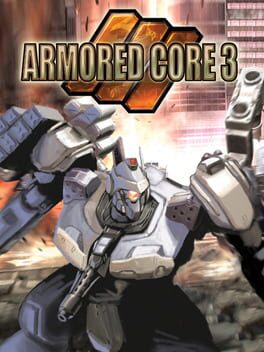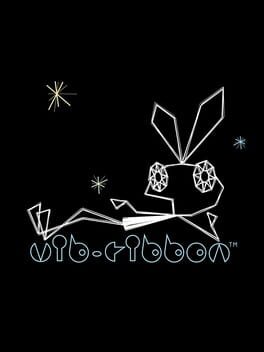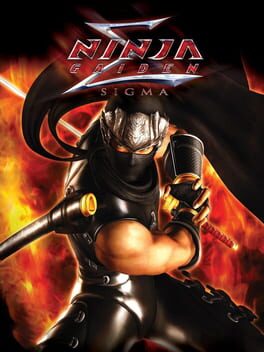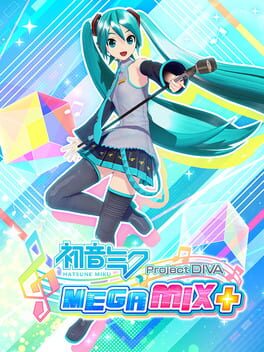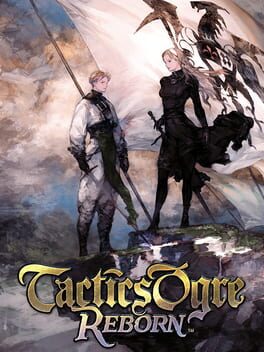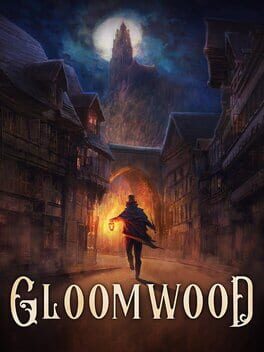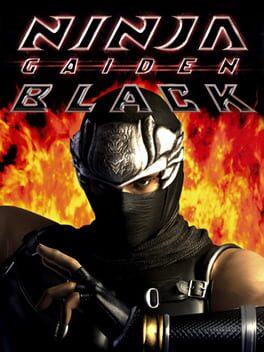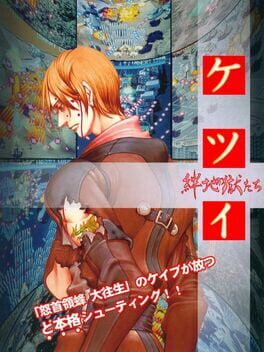yotsuboy
Osamu Dazai mentioned 💯🙏‼
2022
Happened to be reading 'Caliban and the witch' around the same time I was playing this, a great coincidence as it addresses a lot of the same historical events surrounding the game (revolts, taxes, Lutheranism, heresies... basically just about everything).
And being given even just a bit of context opens your eyes to how much care has gone into all things historical. Details, big or small, are everywhere, even those minute enough to go unnoticed by most people. Nonetheless, the sum of all these efforts gives it an atmosphere hard to replicate elsewhere. Despite spending most of your time walking from one place to another and talking to people, it's so captivating that you're as invested as the character you're playing as.
There's an interesting plot (which is hard to go into without spoilers), but that's only half of it. Because another great success is how Pentiment mixes the unusual with the mundane. In the midst of your investigations you're also exposed to the way the characters live. You learn about their views and values, their livelihood... and while at first it may come off as information for the cases, ultimately you've gotten to know them well enough and even empathize with some of them. As a historical work, it achieves its goal of familiarizing one with the past: highlighting its similarities and contrasts in order to show both the historical context of the people as well as how they're shaped by it.
In short, it makes you see the present in the past and vice versa: you can imagine how they would have fared under other circumstances (for example, not being restrained by becoming a nun).
In fact a lot of my enjoyment of the game was from stuff that may not be as important to the central story. Tiny bits of 'irrelevant' dialogue or small interactions and decisions you make throughout the which don't really affect the main plot. Yet being invested in the game makes them very satisfying. There are also enough minigames and small fun puzzles paced throughout the game to alternate with the narrative so that it never feels repetitive.
As for its style, it's amazing. Though it often aims for a more ordinary look to portray the town and its people, it can also be downright beautiful when it wants, often mimicking manuscripts or paintings. Either way it's one of the more unique looking games out there and that also extends to the menus like the map or your journal, the passing of time, and the written dialogue mechanic which also gets used nicely for the narrative.
That's because Pentiment also excels at taking fully advantage of the medium it's in. Many of the things it does and some of its best aspects work because it's a game.
It may have a well-researched bibliography during the credits but it's far from just an abridgement of that information in the form of a game. Stuff like interactivity plays a big role, because it's one thing to read that an event happened during a period of time and another to take part in it and even see how your involvement shapes the outcome. Thus I often was not only thinking about the mystery at hand being solved, but about its implications as well. Whether some lines of questioning were better left alone or if sometimes it was worth speaking the truth; and how this would impact the people around me.
It's a great game, but it also makes me happy that it's a game where it shows that they made what they wanted to do, and enjoyed doing it.
And being given even just a bit of context opens your eyes to how much care has gone into all things historical. Details, big or small, are everywhere, even those minute enough to go unnoticed by most people. Nonetheless, the sum of all these efforts gives it an atmosphere hard to replicate elsewhere. Despite spending most of your time walking from one place to another and talking to people, it's so captivating that you're as invested as the character you're playing as.
There's an interesting plot (which is hard to go into without spoilers), but that's only half of it. Because another great success is how Pentiment mixes the unusual with the mundane. In the midst of your investigations you're also exposed to the way the characters live. You learn about their views and values, their livelihood... and while at first it may come off as information for the cases, ultimately you've gotten to know them well enough and even empathize with some of them. As a historical work, it achieves its goal of familiarizing one with the past: highlighting its similarities and contrasts in order to show both the historical context of the people as well as how they're shaped by it.
In short, it makes you see the present in the past and vice versa: you can imagine how they would have fared under other circumstances (for example, not being restrained by becoming a nun).
In fact a lot of my enjoyment of the game was from stuff that may not be as important to the central story. Tiny bits of 'irrelevant' dialogue or small interactions and decisions you make throughout the which don't really affect the main plot. Yet being invested in the game makes them very satisfying. There are also enough minigames and small fun puzzles paced throughout the game to alternate with the narrative so that it never feels repetitive.
As for its style, it's amazing. Though it often aims for a more ordinary look to portray the town and its people, it can also be downright beautiful when it wants, often mimicking manuscripts or paintings. Either way it's one of the more unique looking games out there and that also extends to the menus like the map or your journal, the passing of time, and the written dialogue mechanic which also gets used nicely for the narrative.
That's because Pentiment also excels at taking fully advantage of the medium it's in. Many of the things it does and some of its best aspects work because it's a game.
It may have a well-researched bibliography during the credits but it's far from just an abridgement of that information in the form of a game. Stuff like interactivity plays a big role, because it's one thing to read that an event happened during a period of time and another to take part in it and even see how your involvement shapes the outcome. Thus I often was not only thinking about the mystery at hand being solved, but about its implications as well. Whether some lines of questioning were better left alone or if sometimes it was worth speaking the truth; and how this would impact the people around me.
It's a great game, but it also makes me happy that it's a game where it shows that they made what they wanted to do, and enjoyed doing it.
2023
Just a fun puzzle game, don't worry about it.
I wonder how many other people picked this up because of black label. The children yearn for Ketsui.
This game is to katamari damacy what katamari damacy is to videogames.
2002
Just like Team Fortress 2 taught me: shooting bullets costs a lot of money.
1999
i own a few music cds, but emulation makes it even easier to play around with custom audio files
2007
A sidestep rather than the step backwards Sigma 2 is to NG2. Most changes are admissible. Not necessary but not unwelcome either. Some arenas are different, there's some extra fiend challenges, some areas & encounters have new formations & enemies... A few puzzles get simplified and a mini boss or two is added or reworked. But Rachel missions honestly suck, it's not even half has fun as Ryu with the war hammer, only upside is some aren't too long. Mission mode is also switched up a bit.
Given that NGB is a great game to replay on higher difficulties to see new types of enemies, attacks, changes in exploration... it's not the worst to play like a remixed version of it. And includes some nice additions like dual katanas but overall so much is passable or unwanted that it ends up not as good. Worse, while it's presented nowadays as the definitive edition of NG, it doesn't fix some problems NGB had but instead creates new ones of its own.
But it still has the core gameplay and feels at least like 75% of the main game; it's not a terrible thing to start with or even try out despite having played black.
Given that NGB is a great game to replay on higher difficulties to see new types of enemies, attacks, changes in exploration... it's not the worst to play like a remixed version of it. And includes some nice additions like dual katanas but overall so much is passable or unwanted that it ends up not as good. Worse, while it's presented nowadays as the definitive edition of NG, it doesn't fix some problems NGB had but instead creates new ones of its own.
But it still has the core gameplay and feels at least like 75% of the main game; it's not a terrible thing to start with or even try out despite having played black.
miku
2022
Spent an obscene amount of time playing this over the last week and a half, Canopus is like a brother to me now.
2022
in early access, it's more or less a solid foundation of mechanics that all play like in thief, except not as good, and also has much less variation: in tools, in ways to approach situations... nor does it add any new stuff that really stands out
didn't hate it probably because it's short enough, but if the whole game turns out like this, then eh
didn't hate it probably because it's short enough, but if the whole game turns out like this, then eh
2005
Video game equivalent of stepping outside the bar and getting jumped by four guys all kicking you at the same time while you're down (this is a good thing).
It's stunning how much depth NGB's high enemy aggression adds to the combat, even simple mob encounters are intense because it's all about managing their numbers, distancing yourself or closing in, deciding who to attack... Ryu's arsenal has a lot of simple moves and combos (usually just alternating weak and strong attacks) that are not often suited to crowd control, but rather to deal high damage against one enemy. Longer, more flashy combos would not fare as well since you'd be getting interrupted a lot. Instead, the approach is to find gaps, kill fast and get out.
Action is fast, and some opponents are just as agile as Ryu, but may outnumber you. Yet you can also dispatch enemies fairly quickly: chains often kill on their last hit (which generally do the most damage in a combo), especially fast foes which usually aren't tanky.
It demands your attention to everyone onscreen (and offscreen!) rather than have enemies that you're not fighting wait on you. Focusing just on who you're attacking means death. It also requires you learn their patterns, since it's essential to know which attacks are better to dodge, roll or counter; in order to find openings between the onslaught. Spamming block just means they'll grab you, and attacking mindlessly has them dodge.
That is not to say you're forced to play defensively, quite the opposite. There's plenty of moves and strategies for each situation, allowing you to guide the flow of the battle; and in general it's just as necessary to damage, stun or kill enemies in order to deal with numbers as it is dodging and blocking. So long as you know which attacks are suited best for the situation and react fast to enemies you can do almost everything.
There's also some weapons that are a bit better for crowd control, like the Lunar. Or heavy hitting ones like the Dabilahro. They're situational, may be faster but weaker, very good against a certain enemy, require a different type of playing... but the variety is good enough even though half of them are reskins.
The enemies though, fiends as a whole are a bit underwhelming. By the end I was a bit tired of the pink fiends, and non-humanoid fiends didn't really seem like a good fit: no room for aerial combos and usually best to stomp them with a heavy weapon, while I much prefer the fast paced exchanges with humanoid enemies such as ninjas. And bossfights are even more of a mixed bag; the most unremarkable ones are also the ones you fight the most. And in general, giant bosses do not flow well with the combat either. Worms, hydracubus, tanks, bone dragon, emperor... even if they're not hard it's like a chore. But the game does have some good challenges. I enjoyed fighting Alma and Doku, but they feel more like exceptions than anything.
There's other shortcomings for me. Water segments are boring and underwater controls very limiting. While platforming isn't the best it does feel good, especially wall running in combat or going around fast with your moveset. Yet there's not much fun to be found in water. In general level design is not too much of a pain but I don't particularly enjoy picking up every last secret in the game or missing out on an item or upgrade because I found only 49 out of 50. Not many 'puzzles' or exploring around or rather, it's simple enough, which I think is for the best. Just enough to break up combat segments while not trying to be another type of game.
Fiend challenges are ok, especially early on, facing the same enemy really helps you to know them, but then a bit boring when you see the best tactic is just to constantly use orbs and UT to kill every wave. And later on you're doing challenges against the same enemy in a different room.
There's some seemingly 'cheaper' tactics like izuna drop, charged UT, wind slash or wall attacks; but they still have you vulnerable at times, and they're less cheesy the more you advance in the game or in difficulty and meet new foes with tactics against it. Besides, it's just more fun to engage enemies than to constantly run up the fucking wall, if you want to not have fun go ahead.
And I must emphasize how much these faults are far outweighed by its strong points. Combat here is the focus and it does it extremely well. In addition to that, higher difficulties add a lot by really switching it up and if that's not enough there's also mission mode with a lot of content and challenges as well.
It's stunning how much depth NGB's high enemy aggression adds to the combat, even simple mob encounters are intense because it's all about managing their numbers, distancing yourself or closing in, deciding who to attack... Ryu's arsenal has a lot of simple moves and combos (usually just alternating weak and strong attacks) that are not often suited to crowd control, but rather to deal high damage against one enemy. Longer, more flashy combos would not fare as well since you'd be getting interrupted a lot. Instead, the approach is to find gaps, kill fast and get out.
Action is fast, and some opponents are just as agile as Ryu, but may outnumber you. Yet you can also dispatch enemies fairly quickly: chains often kill on their last hit (which generally do the most damage in a combo), especially fast foes which usually aren't tanky.
It demands your attention to everyone onscreen (and offscreen!) rather than have enemies that you're not fighting wait on you. Focusing just on who you're attacking means death. It also requires you learn their patterns, since it's essential to know which attacks are better to dodge, roll or counter; in order to find openings between the onslaught. Spamming block just means they'll grab you, and attacking mindlessly has them dodge.
That is not to say you're forced to play defensively, quite the opposite. There's plenty of moves and strategies for each situation, allowing you to guide the flow of the battle; and in general it's just as necessary to damage, stun or kill enemies in order to deal with numbers as it is dodging and blocking. So long as you know which attacks are suited best for the situation and react fast to enemies you can do almost everything.
There's also some weapons that are a bit better for crowd control, like the Lunar. Or heavy hitting ones like the Dabilahro. They're situational, may be faster but weaker, very good against a certain enemy, require a different type of playing... but the variety is good enough even though half of them are reskins.
The enemies though, fiends as a whole are a bit underwhelming. By the end I was a bit tired of the pink fiends, and non-humanoid fiends didn't really seem like a good fit: no room for aerial combos and usually best to stomp them with a heavy weapon, while I much prefer the fast paced exchanges with humanoid enemies such as ninjas. And bossfights are even more of a mixed bag; the most unremarkable ones are also the ones you fight the most. And in general, giant bosses do not flow well with the combat either. Worms, hydracubus, tanks, bone dragon, emperor... even if they're not hard it's like a chore. But the game does have some good challenges. I enjoyed fighting Alma and Doku, but they feel more like exceptions than anything.
There's other shortcomings for me. Water segments are boring and underwater controls very limiting. While platforming isn't the best it does feel good, especially wall running in combat or going around fast with your moveset. Yet there's not much fun to be found in water. In general level design is not too much of a pain but I don't particularly enjoy picking up every last secret in the game or missing out on an item or upgrade because I found only 49 out of 50. Not many 'puzzles' or exploring around or rather, it's simple enough, which I think is for the best. Just enough to break up combat segments while not trying to be another type of game.
Fiend challenges are ok, especially early on, facing the same enemy really helps you to know them, but then a bit boring when you see the best tactic is just to constantly use orbs and UT to kill every wave. And later on you're doing challenges against the same enemy in a different room.
There's some seemingly 'cheaper' tactics like izuna drop, charged UT, wind slash or wall attacks; but they still have you vulnerable at times, and they're less cheesy the more you advance in the game or in difficulty and meet new foes with tactics against it. Besides, it's just more fun to engage enemies than to constantly run up the fucking wall, if you want to not have fun go ahead.
And I must emphasize how much these faults are far outweighed by its strong points. Combat here is the focus and it does it extremely well. In addition to that, higher difficulties add a lot by really switching it up and if that's not enough there's also mission mode with a lot of content and challenges as well.
2022
First off, removing weapon slots was a mistake. There was so much fun in trying different combinations and seeing what worked best. Pairing a slow weapon in your hands with a fast one in your legs; using one with a lot of range and another for close quarters... even using the same weapons in different slots added some new stuff to try out. Now no matter the weapon variety you're cycling between two sets of one weapon, and the fact that you can't cover for their shortcomings as much, means there's some that are not that good to use. Even with the better ones, you still feel more limited because it's just a single weapon.
Combat is awful, doubling down on all of 1 and 2's mistakes. At least, with Umbran Climax you were just using more powerful weaves, but summoning demons is a whole new level of button mashing where now you don't even fight the enemy yourself. What's worse is that DMCV did this better years ago with V, and that was still the weakest part of the game. V felt like a more casual character designed around fighting from a distance with summons, helping players with not having to worry too much about positioning or dodging, but in doing so it also removed a bit of fun - after all those aspects are part of the gameplay too. But demons in Bayonetta 3 don't really have proper movesets, so it all comes down to watching half of (because the camera is not made for it) a giant demon stomp on enemies two slow-ass-attacks at a time.
Demon summons trivialize every fight, and there's the fact that well, you could not use them despite being the mechanic that the game is centered around, but nonetheless you're still suffering from the fact that every other combat aspect has been watered down to make way for it, like the aforementioned weapon sets. Other problems include bloated HP pools on enemies and them having so much armor that your wicked weaves have zero weight to them, just compare the ones in 1 to 3. So you can either spend three times as long fighting simple mobs or inanimate enemies that spawn other enemies, or you can press the summon button and wipe them in 20 seconds and get a perfect platinum, by not really engaging with enemies. If you want to take longer on a fight by actually fighting them yourself, bear in mind this is a game where your performance is also dependent on time. Also, magic is no longer a resource that you accumulate by performing well, but a gauge that continuously recharges so you can keep summoning demons instead of playing yourself.
I don't really have much to say about Viola other than the fact that they should have probably polished Bayo more instead of adding another character that also feels incomplete and it's just Bayonetta but with parries, something you could do in previous game. I'd say her character falls flat also but so does everything in this game.
Previous games were already generous with the fact that you didn't need to learn enemies patterns too much, the generous WT window allowed you to hit them stopped in time, bat within even allows you to get hit first, but in 3 there's not even that much of a need to know how to get openings even. Just let your giant summon stunlock them. It's not helped by the fact that you're constantly seeing the same formations of enemies that are approached in the same way throughout the game, and it's just tiring. They also have less personality than ever, in 1 & 2 at least you talked to some enemies and such, but in here they're just mindless mobs and then recolors. Their designs are also the least interesting of all games (as a whole, the game looks kinda ugly in contrast to previous entries).
But not only is the combat bad, it's a smaller aspect of the game than ever. Before, you could expect a gimmick level or two, or to have verses separated by non-combat sections. In here it seems almost every level has its own shitty segment: bad platforming, bad shmup, bad rhythm game... even not-optional side chapters consisting of dull 2d "stealth". And I fail to see how anyone could actually enjoy kaiju battles when it's just a slow rock paper scissors minigame being framed as an epic battle.
But that's more or less the whole problem behind the game, prioritizing spectacle above actual gameplay. It makes it easy to pick up, but if you're looking for an actual action game it's a huge disappointment. There's so much stuff they could've polished but instead they kept shoving all that in. Level design is worse than ever and still plagued with awful decisions like those timed chests that I believe nobody enjoys. All these bareback sections and the downgrade in combat just seems to scream that they don't actually want to make Bayonetta, or at least as an action game, and I sure as hell don't want to play it. I've been playing both this and Ninja Gaiden Black and the difference is just abysmal. Please play NGB, it's a very good action game.
Story is shit, but who gives a fuck. I'd say skip all the cutscenes but some have QTEs on them where you're forced to watch and there's also forced walking sections and stuff.
Combat is awful, doubling down on all of 1 and 2's mistakes. At least, with Umbran Climax you were just using more powerful weaves, but summoning demons is a whole new level of button mashing where now you don't even fight the enemy yourself. What's worse is that DMCV did this better years ago with V, and that was still the weakest part of the game. V felt like a more casual character designed around fighting from a distance with summons, helping players with not having to worry too much about positioning or dodging, but in doing so it also removed a bit of fun - after all those aspects are part of the gameplay too. But demons in Bayonetta 3 don't really have proper movesets, so it all comes down to watching half of (because the camera is not made for it) a giant demon stomp on enemies two slow-ass-attacks at a time.
Demon summons trivialize every fight, and there's the fact that well, you could not use them despite being the mechanic that the game is centered around, but nonetheless you're still suffering from the fact that every other combat aspect has been watered down to make way for it, like the aforementioned weapon sets. Other problems include bloated HP pools on enemies and them having so much armor that your wicked weaves have zero weight to them, just compare the ones in 1 to 3. So you can either spend three times as long fighting simple mobs or inanimate enemies that spawn other enemies, or you can press the summon button and wipe them in 20 seconds and get a perfect platinum, by not really engaging with enemies. If you want to take longer on a fight by actually fighting them yourself, bear in mind this is a game where your performance is also dependent on time. Also, magic is no longer a resource that you accumulate by performing well, but a gauge that continuously recharges so you can keep summoning demons instead of playing yourself.
I don't really have much to say about Viola other than the fact that they should have probably polished Bayo more instead of adding another character that also feels incomplete and it's just Bayonetta but with parries, something you could do in previous game. I'd say her character falls flat also but so does everything in this game.
Previous games were already generous with the fact that you didn't need to learn enemies patterns too much, the generous WT window allowed you to hit them stopped in time, bat within even allows you to get hit first, but in 3 there's not even that much of a need to know how to get openings even. Just let your giant summon stunlock them. It's not helped by the fact that you're constantly seeing the same formations of enemies that are approached in the same way throughout the game, and it's just tiring. They also have less personality than ever, in 1 & 2 at least you talked to some enemies and such, but in here they're just mindless mobs and then recolors. Their designs are also the least interesting of all games (as a whole, the game looks kinda ugly in contrast to previous entries).
But not only is the combat bad, it's a smaller aspect of the game than ever. Before, you could expect a gimmick level or two, or to have verses separated by non-combat sections. In here it seems almost every level has its own shitty segment: bad platforming, bad shmup, bad rhythm game... even not-optional side chapters consisting of dull 2d "stealth". And I fail to see how anyone could actually enjoy kaiju battles when it's just a slow rock paper scissors minigame being framed as an epic battle.
But that's more or less the whole problem behind the game, prioritizing spectacle above actual gameplay. It makes it easy to pick up, but if you're looking for an actual action game it's a huge disappointment. There's so much stuff they could've polished but instead they kept shoving all that in. Level design is worse than ever and still plagued with awful decisions like those timed chests that I believe nobody enjoys. All these bareback sections and the downgrade in combat just seems to scream that they don't actually want to make Bayonetta, or at least as an action game, and I sure as hell don't want to play it. I've been playing both this and Ninja Gaiden Black and the difference is just abysmal. Please play NGB, it's a very good action game.
Story is shit, but who gives a fuck. I'd say skip all the cutscenes but some have QTEs on them where you're forced to watch and there's also forced walking sections and stuff.
Ketsui's scoring mechanic is my favorite so far, and it synergizes perfectly with how the game is meant to be played. I much prefer it over collecting gems (mushihime), or trying to chain kills and/or colors (ddp, ikaurga...). It's all about getting close to the enemies and killing them, particularly smaller ones, to increase your multiplier and then use your laser on bigger ones to cash in on it. Laser also has a lock-on mechanic apparently unique to this game, sadly. And the closer you are to an enemy, the faster you can lock on it as well. While your laser will always shoot in front of you, you also shoot bullets aimed to the target you locked onto. Though in a way it makes certain bosses and minibosses a bit easier, knowing where to target big enemies and knowing when to switch to standard shot, in order to get chips during long battles makes a big difference.
Like I said, it really rewards aggressiveness and encourages getting up close, high risk/high reward gameplay which eclipses those games that focus just on being bullet hell. It definitely has a lot going on in later stages, but still I'd say Ketsui retains a nice balance. Groups of fodder enemies even when you're up top, are easier to move around with macrododging, while the bigger bulkier ones will throw more dense patterns that you will have an easier time fighting with your laser (which lets you move slower, more precisely) and auto target (helps you focus on the bullets and not so much in hitting). I wouldn't say it's easy though.
When things go well, the game looks easier than it actually is, because often the best strategy is to kill stuff up close before it has a chance to overwhelm you. It does expect you to be pushing constantly and if you fall behind things can go wrong quickly. It's not as easy to remain up close to enemies and clear the screen when enemies start to pile up and there's a lot more bullets and targets onscreen that there should be. There's always using a bomb as a last resort, which I find not really as punishing as in other cave games (unless going for ura loop but i'm not doing that lol), lives always count more than bombs and there's no other penalties.
During my first hours of the game my problem was actually dying without using my bombs, my deaths being mostly due to playing kamikaze style and running into bullets without looking, rather than getting caught in patterns. In retrospective, it's actually very funny that the story of this game is about some pilots getting sent on a suicide mission. The difficulty curve in stages is gentle and ramps up very naturally, you may run into walls but never feel that the game is suddenly throwing bullshit at you. Because it builds up so nicely on previous stuff, you only feel even more determined to face new challenges in harder stages. And because they're so well designed, going through earlier stages again does not become a chore as you get better; they are also nice warmups where you can improve your chaining skills. By the end stage 5 feels basically like 2 stages rolled into one. Still, to me there's the same drawback as with all other shmups, there's some parts where you have to play a bit until you learn the stage no matter what, but there's a lot you can get away with if you do well.
Bullet patterns are great. It has a lot of unique stuff and often it leans into compositions that move organically and are able to overwhelm a lot without clogging up the screen, giving you a challenge but also room for moving around and getting close to different enemies. Bosses in particular are just mesmerizing. While for some the visuals may be a bit generic, everything else in the presentation is wonderful, especially the music. Plus, the new UI on PS4 is really gorgeous and in-depth even if you won't be looking at it much. I really hope they port this to PC sometime.
In short, I love Ketsui's philosophy. Fairly straightforward, it only has two ships differing in shot type and speed, and practically a single approach. It doesn't need any more because it achieves perfection in simplicity and accomplishes what it sets out to do. Only thing I'd say it's missing is that bosses turning into giant anime girl robots like in dodonpachi resurrection.
Like I said, it really rewards aggressiveness and encourages getting up close, high risk/high reward gameplay which eclipses those games that focus just on being bullet hell. It definitely has a lot going on in later stages, but still I'd say Ketsui retains a nice balance. Groups of fodder enemies even when you're up top, are easier to move around with macrododging, while the bigger bulkier ones will throw more dense patterns that you will have an easier time fighting with your laser (which lets you move slower, more precisely) and auto target (helps you focus on the bullets and not so much in hitting). I wouldn't say it's easy though.
When things go well, the game looks easier than it actually is, because often the best strategy is to kill stuff up close before it has a chance to overwhelm you. It does expect you to be pushing constantly and if you fall behind things can go wrong quickly. It's not as easy to remain up close to enemies and clear the screen when enemies start to pile up and there's a lot more bullets and targets onscreen that there should be. There's always using a bomb as a last resort, which I find not really as punishing as in other cave games (unless going for ura loop but i'm not doing that lol), lives always count more than bombs and there's no other penalties.
During my first hours of the game my problem was actually dying without using my bombs, my deaths being mostly due to playing kamikaze style and running into bullets without looking, rather than getting caught in patterns. In retrospective, it's actually very funny that the story of this game is about some pilots getting sent on a suicide mission. The difficulty curve in stages is gentle and ramps up very naturally, you may run into walls but never feel that the game is suddenly throwing bullshit at you. Because it builds up so nicely on previous stuff, you only feel even more determined to face new challenges in harder stages. And because they're so well designed, going through earlier stages again does not become a chore as you get better; they are also nice warmups where you can improve your chaining skills. By the end stage 5 feels basically like 2 stages rolled into one. Still, to me there's the same drawback as with all other shmups, there's some parts where you have to play a bit until you learn the stage no matter what, but there's a lot you can get away with if you do well.
Bullet patterns are great. It has a lot of unique stuff and often it leans into compositions that move organically and are able to overwhelm a lot without clogging up the screen, giving you a challenge but also room for moving around and getting close to different enemies. Bosses in particular are just mesmerizing. While for some the visuals may be a bit generic, everything else in the presentation is wonderful, especially the music. Plus, the new UI on PS4 is really gorgeous and in-depth even if you won't be looking at it much. I really hope they port this to PC sometime.
In short, I love Ketsui's philosophy. Fairly straightforward, it only has two ships differing in shot type and speed, and practically a single approach. It doesn't need any more because it achieves perfection in simplicity and accomplishes what it sets out to do. Only thing I'd say it's missing is that bosses turning into giant anime girl robots like in dodonpachi resurrection.
If only you could talk to these creatures, then perhaps you could try and make friends with them, form alliances... Now, that would be interesting.
